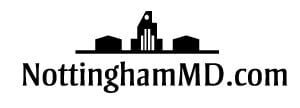Original story below…
———
ANNAPOLIS, MD—As a result of improved COVID-19 health metrics across the state, Governor Larry Hogan on Thursday announced that every county school system in Maryland is now fully authorized to begin safely reopening.
The authority and decision making on safe openings continues to rest with county boards of education. Decisions should be based on a set of statewide metrics, guidelines, and benchmarks issued today by the Maryland Department of Health (MDH) in collaboration with the Maryland State Department of Education (MSDE). Read the guidance and benchmarks.
The governor was joined by Dr. Jinlene Chan, Acting Deputy Secretary for Public Health Services at MDH, and MSDE State Superintendent of Schools, Dr. Karen Salmon. Currently, 16 of the state’s local school systems have developed plans for returning children to schools for some form of in-person instruction this calendar year, including students with special needs.
Governor Hogan and Dr. Salmon will visit school sites across the state in the coming weeks to observe systems that are bringing small groups of students back into a safe and educationally effective environment.
“As a result of our improved health metrics, every single county school system in the State of Maryland is now fully authorized to begin safely reopening,” said Governor Hogan. “Nearly everyone agrees that there is no substitute for in-person instruction. It is essential that we all work together on flexible hybrid plans to safely get some of our kids back into classrooms and into healthy and supportive learning environments.”
COVID-19 UPDATES. Maryland’s key COVID-19 health metrics continue to trend in a positive direction, and the state’s economic recovery continues.
Health Metrics:
- The statewide positivity rate is now down to 3.3%, a decline of more than 87% since it peaked on April 17 at 26.91%.
- Maryland’s positivity rate has now been under 5%, the benchmark recommended by the World Health Organization and the CDC, since June 25, and has been under 4% since August 8.
- Last week, for the first time, the COVID-19 positivity rate for all 24 jurisdictions in Maryland fell below the 5% milestone. Currently, 17 of the state’s jurisdictions have positivity rates below 3.5%.
- The positivity rate among Marylanders under the age of 35 has declined by 44% since July 23, and has now fallen below 4%, to 3.79%. The positivity rate among Marylanders 35 and older has dropped below 3%, and is now 2.97%.
Economic Recovery:
- The State of Maryland has now added 156,200 jobs in 90 days, and the state’s unemployment rate has dropped to 7.6%, which is more than 25% better than the national unemployment rate and the very best in the region.
- This week, Maryland saw its lowest number of unemployment claims since the first week of the pandemic in early March.
- More than 70% of Maryland’s economy remained open through the COVID-19 pandemic, and more than 98% of the state economy has been open since completing all Stage Two reopenings on June 19.
SCHOOLS UPDATE. Dr. Salmon announced that based on the state’s improving health metrics, she is urging local school systems to reevaluate their modes of instruction at the end of the first quarter. The state is making $10 million in grant funding available to help systems that are able to move toward in-person instruction.
“While adherence to these metrics for re-entry into classrooms are not considered requirements, I am strongly encouraging local school systems to utilize our improving numbers and the provided metrics as the driving force for the decision to return to school buildings,” said Dr. Salmon. “Health and safety precautions must remain in place once we begin to bring more students back into schools, and school systems should continue to work in conjunction with local health officials to monitor trends in the metrics and any outbreaks at area schools.”
HEALTH BENCHMARKS. Dr. Chan presented county-specific benchmarks for conversations among local officials regarding in-person instruction. These benchmarks are based on metrics that, taken together, reflect the levels of community transmission, including test positivity and case rates.
“I want to emphasize that this is guidance to aid in decision-making rather than being prescriptive, and there is flexibility that schools have to make decisions about how to best meet the educational needs of their students while taking into account the level of community spread and their capacity to implement the guidelines,” said Dr. Chan.


